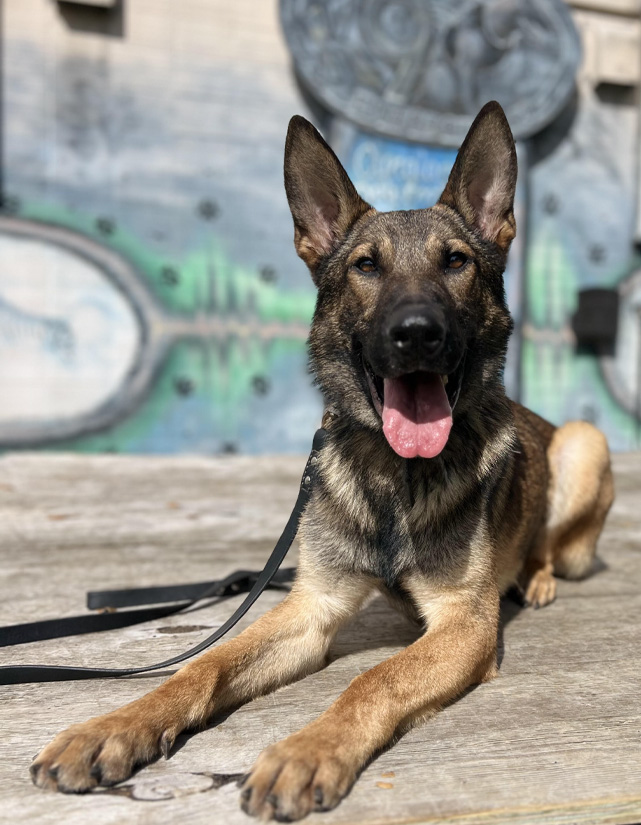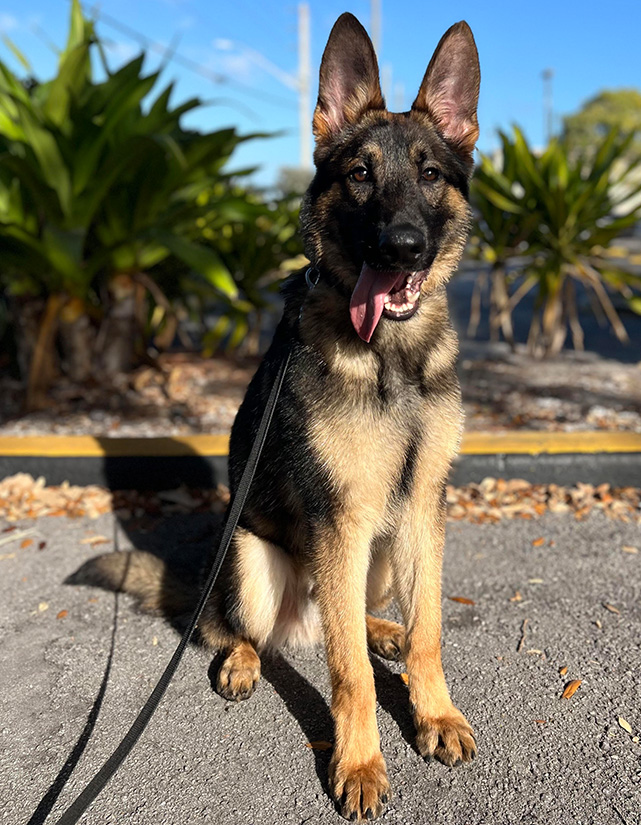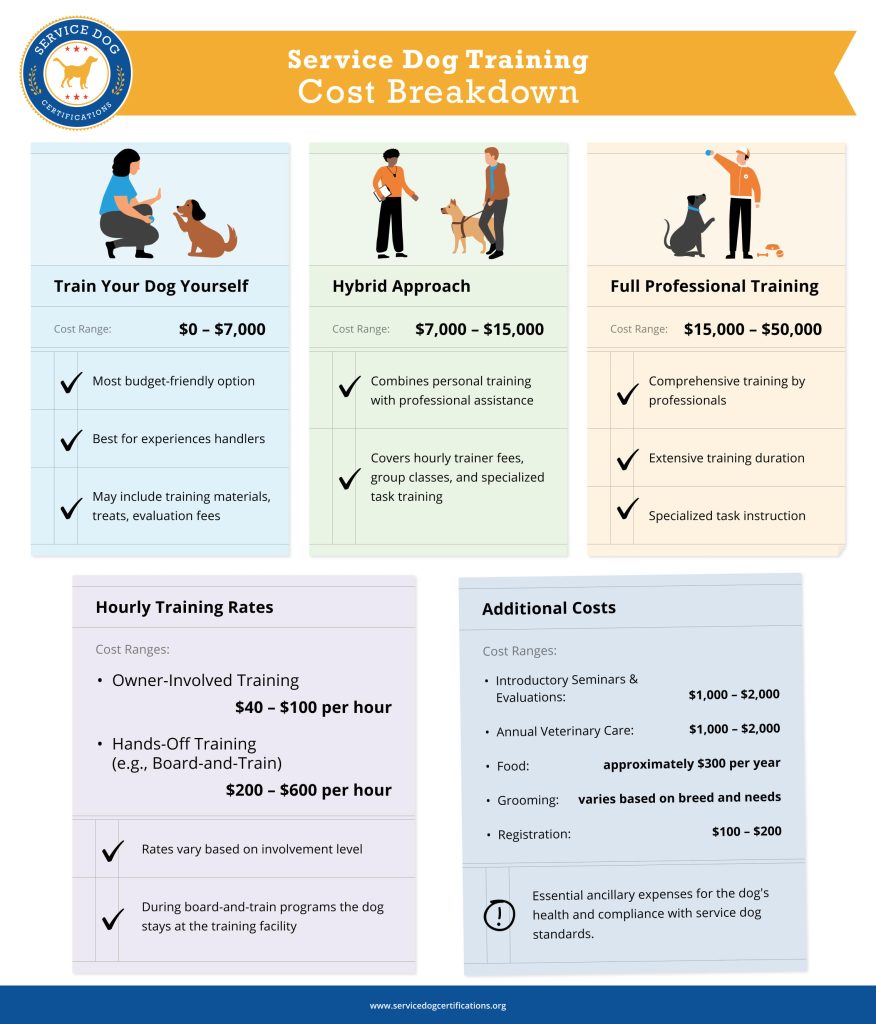Are you thinking about bringing home a fully trained dog but wondering how much it will cost? You’re not alone.
Knowing the price can help you plan better and avoid surprises. But the cost isn’t just about money—it’s about the value of having a dog that listens, behaves well, and fits smoothly into your life. You’ll discover the real costs behind a fully trained dog, what influences the price, and how to choose the best option for your budget and lifestyle.
Keep reading to find out everything you need before making this important decision.
Factors Affecting Dog Training Costs
Understanding the factors that influence the cost of a fully trained dog helps you make smarter choices without overspending. Several key elements play a role in determining how much you’ll pay for professional training. Knowing these details lets you balance quality and price effectively.
Breed And Size
Different breeds have varying temperaments and learning speeds. Larger dogs might require more physical training sessions, which can increase costs. For example, training a Great Dane often demands more time and effort than a smaller breed like a Chihuahua.
Have you considered how your dog’s breed affects not just their behavior but also the training expenses? Some breeds naturally pick up commands faster, reducing the overall price.
Training Type
The style of training you choose impacts the cost significantly. Basic obedience classes generally cost less than specialized training like agility, protection, or service dog preparation. Group sessions tend to be cheaper than one-on-one private lessons.
Think about what you want your dog to achieve. Would group classes suffice, or does your dog need focused attention? This decision can save or cost you hundreds of dollars.
Trainer Qualifications
Highly qualified trainers with certifications often charge premium rates. Experience counts — trainers with a proven track record in handling difficult dogs may charge more but deliver better results. Cheaper trainers might lack credentials or use outdated methods.
Ask yourself: is it worth paying extra for expertise that ensures lasting results? Investing in a skilled trainer upfront can prevent costly retraining later.
Training Duration
Longer training programs naturally cost more. Some dogs need just a few sessions, while others require months to correct behavioral issues. The complexity of your dog’s needs affects how many hours of training you’ll pay for.
Consider how quickly you want your dog trained. Would a short, intensive course work, or do you prefer gradual progress over time? This choice directly affects your budget.
Types Of Dog Training Services
Dog training services come in many forms. Each type helps dogs learn different skills. Choosing the right training depends on your dog’s needs and your goals.
Training can focus on simple commands or fix serious problems. Some services prepare dogs for special jobs. Understanding these types helps you decide the cost and value.
Basic Obedience
Basic obedience teaches dogs simple commands. Sit, stay, come, and heel are common lessons. This training builds good manners and safety habits. It usually takes a few weeks to complete. It suits puppies and adult dogs new to training.
Advanced Training
Advanced training improves a dog’s skills beyond basics. Dogs learn complex commands and tasks. This may include off-leash control and agility. It is ideal for active dogs or those in sports. Advanced classes take more time and skill from the trainer.
Behavioral Correction
Behavioral correction fixes unwanted habits. Issues like barking, biting, or anxiety are addressed. Trainers use special techniques to change behavior. This type is important for dogs with problem behaviors. It often requires personalized sessions and follow-up support.
Specialized Training
Specialized training serves unique roles. Examples include service dogs, therapy dogs, and hunting dogs. This training is specific and detailed. It prepares dogs for important tasks and jobs. Specialized programs are usually longer and more costly.
Cost Breakdown By Training Method
Understanding the cost of a fully trained dog means looking closely at the different training methods available. Each method comes with its own price range and benefits, helping you decide what fits your budget and your dog’s needs. Let’s break down the costs so you can make an informed choice that works for both of you.
Group Classes
Group classes usually cost between $100 and $300for a series of sessions lasting 4 to 8 weeks. These classes offer socialization, which is great if your dog needs to learn how to behave around other dogs and people. You pay less here because the trainer’s attention is divided among several dogs, but you still get professional guidance.
Think about how much time you can commit. Group classes require you to attend regularly and practice exercises at home. If consistency is your challenge, this could be a cost-effective way to keep training on track.
Private Sessions
Private training sessions typically range from $50 to $120 per hour. This method allows for personalized attention tailored to your dog’s specific behavior issues or learning speed. You and your trainer can focus on your goals without distractions, which often leads to faster progress.
Have you noticed your dog struggles with certain commands or behaviors that group settings don’t address? Private sessions can target those precisely. However, the total cost depends on how many sessions you need, so plan your budget accordingly.
Board And Train Programs
Board and train programs are the priciest option, generally costing $1,000 to $3,000for a 2 to 4-week stay. Your dog lives with the trainer and receives intensive daily training, which can dramatically improve behavior in a short time. This method suits busy owners who can’t train their dog regularly.
Imagine your dog coming home with new skills and better manners, all without you having to do the heavy lifting. But remember, you’ll still need to reinforce training at home to maintain results. Are you ready to invest upfront for long-term ease?
Online Training Options
Online training courses are the most affordable, with prices from <strong$20 $200depending on the program’s length and depth. These programs offer videos, guides, and sometimes live coaching sessions, allowing you to train at your own pace. The flexibility is a big plus if your schedule varies.
However, online training requires self-discipline and consistency. If you enjoy learning on your own and can dedicate time daily, this could be the most cost-effective route. Could this be the solution that fits your lifestyle and budget?

Credit: shultzk9.com
Average Price Ranges In 2025
Understanding the average cost of a fully trained dog in 2025 helps set realistic expectations. Prices vary widely based on several factors. Training type, location, and provider all influence the final cost.
Basic obedience training costs less than specialized or advanced training. Puppy training programs often fall in a different price range than adult dog training. Knowing these ranges can help you budget effectively.
Regional Variations
Costs differ greatly depending on your region. Urban areas usually charge more for dog training services. Rural locations often have lower prices but fewer options.
- Big cities: $1,000 to $3,000
- Suburbs: $700 to $2,000
- Rural areas: $500 to $1,500
Local demand and trainer availability affect these prices. Always check prices in your specific area before deciding.
Comparing Service Providers
Different trainers and schools offer various price points. Group classes cost less than private sessions. Board-and-train programs usually carry a higher price tag.
- Group classes: $150 to $500
- Private lessons: $500 to $2,500
- Board-and-train: $1,500 to $4,000
Trainer experience and certifications also impact costs. Choose a reputable provider for the best results.
Hidden And Additional Fees
Some costs do not appear upfront. Travel fees may apply if trainers visit your home. Supplies, such as training tools or food, might not be included.
Follow-up sessions or refresher courses often have extra charges. Ask for a full cost breakdown before starting training.
Ways To Save On Training Costs
Training a dog can be expensive, but there are smart ways to save money. Understanding different options helps reduce costs without losing quality. Simple changes and choices make a big difference in your budget.
Diy Training Resources
Use online videos and tutorials to teach basic commands. Many websites offer free guides for dog training. Books and apps provide step-by-step instructions at no cost. Practicing daily with your dog builds good habits fast.
Package Deals And Discounts
Look for training centers offering multiple sessions at a lower rate. Some trainers provide discounts for group classes or early sign-ups. Check local pet stores or community centers for special offers. Bundling services like grooming and training can save money.
Training At Home
Set aside time to train your dog in your own space. Avoid travel costs and fees for outside classes. Use household items as training tools and toys. Consistent, short sessions help your dog learn well over time.

Credit: shultzk9.com
Value Of Investing In Professional Training
Investing in professional dog training brings lasting value beyond the initial cost. A well-trained dog behaves better, is safer, and fits smoothly into family life. Training helps dogs learn skills that make daily life easier and more enjoyable for both pets and owners.
Professional trainers use proven methods tailored to each dog’s needs. This personalized approach ensures effective learning and stronger habits. The time and money spent on training often save frustration and expenses later.
Long-term Benefits
Professional training builds a strong foundation that lasts for years. Dogs learn commands and social skills that prevent future problems. Training reduces the risk of accidents or destructive behavior.
Well-trained dogs adapt better to new environments and situations. This flexibility adds to their quality of life. Owners often experience less stress and more confidence in their pet’s behavior.
Improved Dog Behavior
Trained dogs listen and respond promptly to commands. This obedience keeps them safe in busy or dangerous areas. Training also helps reduce unwanted behaviors like barking, chewing, or jumping.
Behavioral improvements make daily routines smoother. Walks become more pleasant, and guests feel comfortable around the dog. These changes enhance the overall home atmosphere.
Enhanced Owner-dog Relationship
Training strengthens the bond between owner and dog. Clear communication builds trust and respect on both sides. Owners feel more in control and proud of their dog’s progress.
Spending time together during training creates positive memories. The dog becomes more responsive and eager to please. This connection leads to a happier, healthier life for both.
Questions To Ask Before Hiring A Trainer
Hiring a dog trainer is a big decision that affects your pet’s behavior and your daily life. Asking the right questions can save you time, money, and frustration. Before you commit, make sure you understand who you’re hiring and how they work.
Trainer Credentials
Start by checking the trainer’s qualifications. Do they have certifications from recognized organizations like the International Association of Canine Professionals (IACP) or the Certification Council for Professional Dog Trainers (CCPDT)?
Credentials show they’ve studied dog behavior and training methods seriously. Don’t hesitate to ask about their experience with dogs similar to yours. A trainer who has worked with your breed or temperament will likely understand your dog better.
Training Techniques Used
Ask the trainer to explain their approach. Do they use positive reinforcement, clicker training, or more traditional methods? Techniques matter because your dog’s learning and comfort depend on them.
One time, I hired a trainer who relied heavily on punishment-based methods. It made my dog fearful and slowed progress. You want to know exactly what tools they’ll use before you invest.
Also, clarify how flexible they are with your dog’s needs. Will they adjust if your dog doesn’t respond well to certain methods?
Success Stories And References
Request references from previous clients. Hearing about real results can give you confidence. Ask for specific examples of challenges they’ve helped dogs overcome.
A trainer who shares success stories openly is usually proud of their work and transparent about their process. If possible, speak directly with past clients to learn about their experiences.
Don’t forget to check online reviews and social media feedback. Sometimes, honest opinions from multiple sources reveal patterns you won’t get from the trainer alone.

Credit: shultzk9.com
Frequently Asked Questions
How Much Does Basic Dog Training Cost?
Basic dog training typically costs between $30 and $80 per session. Group classes are cheaper, while private sessions cost more. Prices vary by location and trainer experience.
What Factors Affect Fully Trained Dog Prices?
Prices depend on breed, training level, trainer reputation, and location. Specialized training, like service or protection, increases costs significantly. Duration and training method also influence pricing.
Is Investing In A Fully Trained Dog Worth It?
Yes, a fully trained dog saves time and reduces behavioral issues. It ensures safety and better socialization. The initial cost is often outweighed by long-term benefits.
Can I Train My Dog At Home To Save Money?
You can train your dog at home using online resources. However, professional trainers provide expert guidance and faster results. DIY training may require more time and patience.
Conclusion
Investing in a trained dog offers many benefits. Peace of mind. Companionship. Security. Costs depend on breed, training level, and location. Research and budget carefully. Quality training requires patience and commitment. Consider adoption from shelters for cost-effective options. They provide love too.
Evaluate your lifestyle and needs. Make an informed decision. A trained dog can enhance your life. Choose wisely for a lifelong friend.

